With winter on the way and inspired by a recent visit to the Weald & Downland Museum, Sophie Paterson explores a selection of historical personal heating methods. Could they be adopted in homes today?
“Heating energy is by far the biggest slice of UK household energy use. To make serious inroads in cutting CO2 from housing, reducing heating energy has to be part of any solution.”
So states the most recent UK Housing Energy Fact File in relation to space heating demands and that’s before considering water heating, too. The majority of modern-day houses rely extensively on power-hungry convection heating systems, in contrast to the radiant heat offerd by wood stoves, kachelofens, mass heaters and open fires of old.
Aside from the vital issue of appropriate insulation in slowing the rate of heat loss from our homes, are there tools and methods we might adopt to stay warm in a cooler house? A look back in time offers a host of small-scale solutions, from the humble hooded chair to thermal underwear.
Localised insulation: the hooded chair
Of particular relevance where an open fire or wood-burning stove is in use, the purpose of the hooded chair is twinfold: to protect the sitter from incoming cold draughts and, if placed close to a heat source, to provide effective localised insulation by containing heat within the immediate area enclosed by the high back and sides of the chair – its so-called hood.
Ideal for cosy fireside reading today, hooded chairs were originally developed in 16th century France for use by porters and were often made from wicker. Their French name ‘guérite‘ derives from the term for gatehouse. The improved acoustics provided by the hood of their chairs also aided their work, ensuring they were alert to every sound. The paintings above and below by Baroque Flemish painter Jacob Jordaens feature examples of their everyday use.

A hooded chair in use by both people and animals on the left of this farmhouse scene. Satyr and the Peasant by Jacob Jordaens, 1620.
By the 19th century, hooded chairs were falling from fashion with the demise of porters themselves and they became all but obsolete by the 20th century. Their practicality, however, could still live on in households using radiant heat sources such as woodburning stoves or open fireplaces. Indeed, a recent New Craftsmen collaboration between furniture maker Gareth Neal and traditionl Orkney chair maker Kevin Gauld indicates the hooded chair could be headed for a revival.

Credit: The New Craftsmen Blog
Portable and personal: foot stoves
Foot stoves were a 17th century mainstay, providing an easy to handle heat source which could travel with its user from room to room. Their use was much needed in the depths of winter, as is evident from the account below.
In bitter winter weather women carried to meeting little foot-stoves,–metal boxes which stood on legs and were filled with hot coals at home, and a second time during the morning from the hearthstone of a neighboring farm-house or a noon-house. These foot-warmers helped to make endurable to the goodwives the icy chill of the meeting-house; and round their mother’s foot-stove the shivering little children sat on their low crickets, warming their half-frozen fingers.
Alice Morse Earle, The Sabbath in Puritan New England, Chapter 8

A 19th century French chaufferette à braises or foot stove. Credit: Claude-Henry Bernardot
At their most basic, foot warmers could be anything from hot stone slabs to pots of coal but foot stoves provided a new level of sophistication. According to Home Things Past, ‘the simplest were punched tin in a wooden frame with an earthenware or iron pot inside. Brass was more stylish, and silver warmers were used by the wealthy, although you couldn’t actually rest your feet on them.’ The Dutch were perhaps their most famous proponents, with a stoof a common feature in paintings, including the one below produced by Quiringh Gerritsz van Brekelenkam in 1661.

A traditional Dutch foot stove can be seen in use by the girl spinning. Credit: Wikimedia
Whilst traditional foot stoves are perhaps impractical for most modern homes due to the requirement of coal embers, we can still trace their use to more modern day equivalents. By the turn of the 20th century, foot stoves had evolved to embrace hot water over hot coals – meet the ceramic foot warmer.

An American design featured in the Blackman House Museum, Washington, USA. Credit: Joe Mabel
Designs such as these were very popular in both the UK and the USA. With space to place a foot on either side of the corked opening, the bottles could also be slipped under covers to warm a bed. These ever-practical earthernwares are still to be found in antique and second-hand shops but were ultimately superceded by the advent of modern rubber hot water bottles. The ultimate aid to winter bed-time cosiness, the humble hot water bottle is not to be neglected when it comes to practical ways to reduce wider heating outputs, saving energy and money.
Thermal base layers: long johns at the ready?
Whilst no doubt mere common sense for my grandparents’ generation, many of those in my own here in the UK might instinctively reach for the thermostat rather than thermal underwear. Yet the simple step of maintaining your own body heat rather than that of an entire room, or, indeed, an entire house, is one which cannot be understated. In an extract from his excellent article Insulation: first the body, then the home, Kris de Decker states that:
When discussing space heating, we overlook the fact that our own bodies are heating appliances too. The human body’s core temperature is 37° C (98.6°F), and much of the skin’s temperature is around 33° to 34° C (92°F). Because the temperature of the environment is often lower than that, our body constantly emits heat into the atmosphere. A small percentage of this heat is lost through breathing, but the largest part of heat loss occurs via the skin.
Clothing does not produce heating by itself – it only prevents body heat from escaping into the environment. This happens by warming the layer of air between skin and clothing. Air is a relatively bad conductor of heat and therefore a good insulator. Exactly the same technique is applied when we insulate a home. The only difference is that in the case of a building we can use more rigid and bulky materials because a building does not have to move or feel comfortable. Naturally, insulation of the body is much more energy efficient than insulation of the space in which this body finds itself. Insulating the body only requires a small layer of air to be heated, while a heating system has to warm all the air in a room to achieve the same result.

If it’s good enough for astronauts…? Expedition 32 Flight Engineers Sunita Williams of NASA and Akihiko Hoshide of the Japan Aerospace Exploration Agency pose in thermal underwear specially designed for space after completing their first space walk. Credit: NASA via Wikimedia Commons
These days, thermal underwear marries practicality and style with a variety of synthetic and natural materials in use. Patagonia and Icebreaker are amongst companies offering all-natural alternatives, although Kris de Decker makes a well-argued case for considering synthetic options too. Whilst some admittedly seem pricey, when taking into account both quality and longevity, thermal underwear and other clothing could soon pay for itself if it helps to reduce your heating bills each year.
Fast forward: electric clothing?
Electric clothing might sound far-fetched to some but it is in fact already here. A favourite amongst bikers for years, electric clothing essentially adopts similar principles to the electric blanket. From a sustainability point of view, its major drawback is that, whilst it provides much needed warmth outdoors, it does not save energy when used outside. Inside, however, is an entirely different issue, according to Low Tech Magazine. If you’re intrigued, head on over to hear more about the potential of electric clothing in Heat Your Clothes, Not Your House with Kris de Decker.
So here ends something of whirlwind tour of heating tools, past and present. I hope there might be one or two starting points to help you stay warm without turning up the thermostat this winter. There are, I’m sure, a lot of other points to consider too so if you have any tips or tools to share please do let us know in the comments below.

About the author
Sophie Paterson works as part of the Lowimpact.org team with a focus on social media and book promotion. She spent the past year living and volunteering on a farm in Devon. In any spare time she undertakes natural building work and training and attempts to keep up her Arabic language skills.

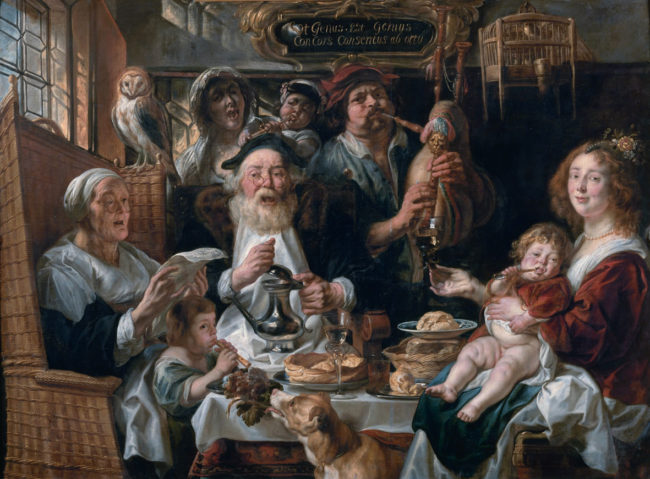
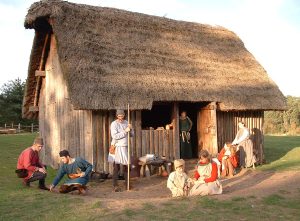
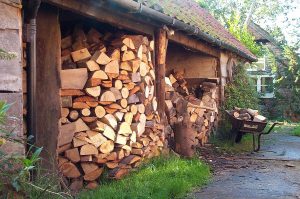
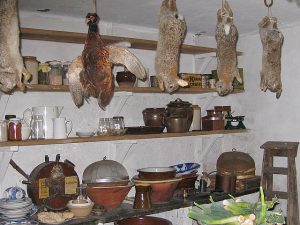
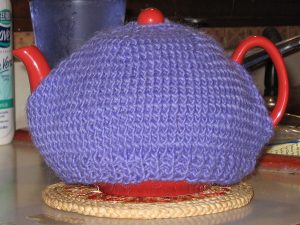
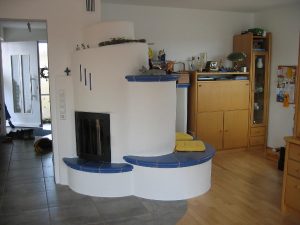
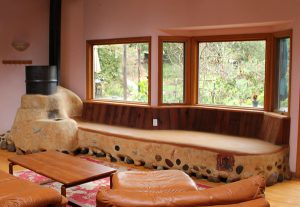
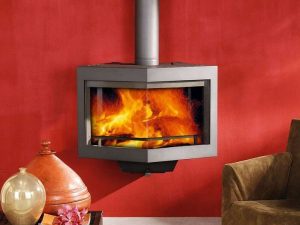
2 Comments
In Iran the traditional winter festivals were spent under a Korsi – a low table with a charcoal burner underneath and a big quilt over the top.
https://en.wikipedia.org/wiki/Korsi Time foe a revival?
All very fine and dandy, but once snug and warm the problem occurs when you have to move about within a cold house. What is electric clothing’s energy source? If it’s not the wearer’s own radiant heat or an on-board dynamo, it’s got to be a carbon expensive battery? Just curious…